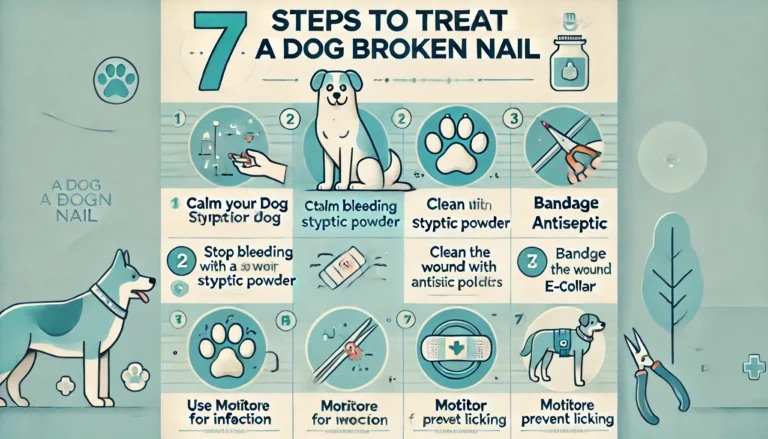Signs a Dog Is Dying of Cancer? A comprehensive Guide

Introduction to Signs a Dog Is Dying of Cancer
Cancer remains one of the leading causes of death in dogs, particularly in their senior years. Different cancers, such as lymphoma, mast cell tumors, and osteosarcoma, present varied symptoms and progress at different rates. As a dog reaches the terminal stages of cancer, specific signs emerge that indicate they are nearing the end of their life. Understanding these signs can help dog owners prepare for the inevitable and manage their pet’s comfort during their final days.
Common Cancers in Dogs and Their Impact
Lymphoma, a prevalent form of cancer in dogs, affects the lymph nodes and can appear as swollen glands that are typically non-painful. It may progress rapidly or slowly depending on the type, but without treatment, most dogs with lymphoma may only survive for 1-2 months. Treatment can extend life significantly, sometimes up to a year or more with good quality of life.
Mast Cell Tumors are another common cancer in dogs, affecting the skin and other areas like the spleen, liver, or gastrointestinal tract. The progression depends on the tumor grade, with high-grade tumors being more aggressive and carrying a poorer prognosis.
Osteosarcoma is aggressive and affects the bones, commonly leading to pain and swelling in the affected limbs or bones. It tends to spread quickly, making early detection and management critical.
Signs a Dog Is Dying from Cancer
When a dog is nearing the end of life due to cancer, several signs may be observed. These signs help in recognizing when a dog might be suffering or in pain, guiding decisions about palliative care or humane euthanasia.
1. Significant Weight Loss and Muscle Wasting
One of the first signs of a terminal condition can be rapid weight loss, despite maintaining a normal diet. Cancer can lead to cachexia, a form of extreme muscle wasting seen in late stages.
2. Decreased Appetite
Loss of appetite is common in dogs suffering from cancer. As the disease progresses, they might refuse food altogether, which can further accelerate health decline.
3. Increased Pain and Discomfort
As tumors grow and metastasize, they can cause considerable discomfort. Dogs may limp, show difficulty in lying down or getting up, or cry out in pain unexpectedly.
4. Breathing Difficulties
Dogs with lung cancer or metastatic cancer affecting the lungs may show signs of respiratory distress. This can manifest as rapid breathing, coughing, or a bluish tint to the gums.
5. Lethargy and Decreased Interest in Activities
A significant decrease in energy levels and a lack of interest in activities they once enjoyed can be a sign that a dog’s body is not coping well with the illness.
6. Gastrointestinal Symptoms
Symptoms like vomiting, diarrhea, or constipation are common in dogs dying from cancer, especially those with gastrointestinal tumors.
7. Changes in Urination and Bowel Movements
Cancer can lead to increased frequency of urination, difficulty urinating, or incontinence. Similarly, changes in bowel movements can occur, including straining or passing blood.
8. Visible Tumors
In some types of cancer, tumors may be visible on the body and can show changes like increased size, ulceration, or bleeding.
9. Odor
As sad as it is, a foul odor can be a sign of tumors that are necrotizing or infected, especially noticeable in cancers affecting the mouth or those that are externally visible.

Managing End-of-Life Care
Recognizing these signs not only helps in managing the dog’s condition but also prepares the owner for end-of-life decisions. Palliative care options may include pain relief, dietary changes, and other supportive measures to improve quality of life. Veterinarians can provide guidance on when euthanasia might be considered to prevent undue suffering.
do you know
Fleas are a common and frustrating problem for dog owners. These tiny, blood-sucking pests can cause severe itching, skin infections, and even transmit diseases.
Conclusion
Watching a beloved pet decline from cancer is profoundly difficult. By understanding the signs of what a dying dog may exhibit, owners can better prepare to make compassionate choices about their pet’s end-of-life care. It’s important to maintain regular consultations with a veterinarian to manage a dog’s cancer diagnosis effectively and compassionately.
How do I know if my dog is dying from cancer?
Look for severe symptoms like constant pain, extreme lethargy, refusal to eat, and difficulty breathing.
How to tell if a dog is in its last days?
Signs include complete loss of appetite, significant decrease in mobility, labored breathing, and unresponsiveness.
How long can a dog have cancer before dying?
This varies widely depending on the type of cancer and its aggressiveness; it could be weeks to years.
What is a dog’s behavior before death?
Dogs may become withdrawn, decrease their interaction with family, and seek solitude; they may also have a decreased response to external stimuli.
What happens immediately before a dog dies?
Immediate signs include extreme weakness, inability to move, shallow or irregular breathing, and possible loss of consciousness.
What is the last stage of a dog?
The last stage involves multi-organ failure, marked by cessation of eating and drinking, incontinence, and possible loss of sight or hearing.
Do dogs cry at the end of life?
Dogs may not cry tears as humans do, but they can vocalize pain or distress through whining or whimpering.
How to tell if a dog’s body is shutting down?
Signs include extreme fatigue, non-responsiveness, cool body extremities, slow or irregular breathing, and collapsing.
What shuts down first when a dog dies?
Typically, digestion halts first, followed by the kidneys, then the heart and lungs, and finally the brain.






